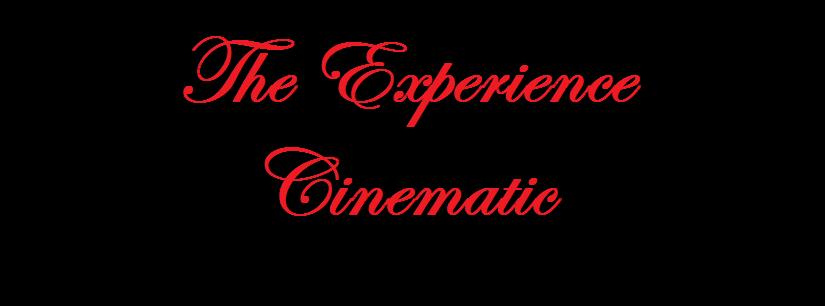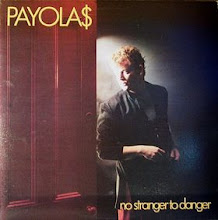 Here are some potential alternate titles for Green Lantern: Emerald Knights, the latest in the series of DC DTV films:
Here are some potential alternate titles for Green Lantern: Emerald Knights, the latest in the series of DC DTV films:“Green Lantern: Gee, Ain’t the Corps Great?”
“Green Lantern: Where Token Violence and Cursing Counts as Mature Storytelling”
“Green Lantern: Speeches! Glorious, Glorious Speeches!”
And so on, and so forth.
 Yes, I have watched Green Lantern: Emerald Knights, and once again, I find myself playing the bad guy to the DC DTV films, a role I do no cherish, and one that I am frankly getting sick and tired of playing. At this point, I think it is a perquisite that all viewers of these films go in with incredibly low expectations, because that is about the only way to get through the mediocrity that has been primarily produced thus far.
Yes, I have watched Green Lantern: Emerald Knights, and once again, I find myself playing the bad guy to the DC DTV films, a role I do no cherish, and one that I am frankly getting sick and tired of playing. At this point, I think it is a perquisite that all viewers of these films go in with incredibly low expectations, because that is about the only way to get through the mediocrity that has been primarily produced thus far.Like the earlier Batman: Gotham Knight, Green Lantern: Emerald Knights is an anthology film consisting of five tales, told by Hal Jordan (Nathan Fillion) to new recruit Arisia (Elisabeth Moss) in a wrap around story that involves the Green Lantern Corps facing a catastrophic threat, etc, etc. The stories include the tale of the first ever Green Lantern, one involving drill instructor Kilowog’s (Henry Rollins) own boot camp experience, Laira’s (Kelly Hu) first, and most personal, mission, the classic story of why Mogo does not socialize, and a tale about Hal Jordan’s predecessor, Abin Sur (Arnold Vosloo). Along the way, Arisia learns what it means to be a Green Lantern, hints about how to defeat the “catastrophic” threat to the universe are dropped, and numerous nods to comic lore are are made.
 To be honest, this review is coming across as much angrier than the film really deserves, seeing as how it is not a terrible film. Green Lantern: Emerald Knights is a competent piece of filmmaking, well animated, directed, and acted, with a typically bland score that has come to mark these DTV efforts nearly every time out. But being a competent piece of work does not make the film any less mediocre, or make the viewing experience any less dull. At least if the film were terrible, it might have been memorable, which is more than can be said of the end result here.
To be honest, this review is coming across as much angrier than the film really deserves, seeing as how it is not a terrible film. Green Lantern: Emerald Knights is a competent piece of filmmaking, well animated, directed, and acted, with a typically bland score that has come to mark these DTV efforts nearly every time out. But being a competent piece of work does not make the film any less mediocre, or make the viewing experience any less dull. At least if the film were terrible, it might have been memorable, which is more than can be said of the end result here.As you might have guessed from my mock alternate titles, the film suffers from several major problems. First, the film is little more than characters standing around telling tales about how awesome the organization they are part of is, while didactically shoving down the audiences’ collective throat what it "means" to be a Green Lantern. And I do mean shoved, because the filmmakers, worried that you might have missed the moral/point of the story, make sure that somebody at some point gets to make a speech that will make everything all clear. Missed that willpower is the key to being a Green Lantern? Do not worry, Hal’s there to spell it out for you. Confused as to the reason Kilowog and his instructor Deegan are both hard asses? Deegan will make is all crystal clear, using his dying breath, no less. As someone who firmly believes in trusting the audience to piece things together for themselves, this storytelling tactic drives me up the wall, and is rather insulting given how simple these stories are.
In fact, the simplicity of the stories and the writing once again brings into question just who the hell these films are made for. Given the nature of the tales presented, it would appear that Green Lantern: Emerald Knights is aimed at a younger set of viewers, which would be fine. However, as I have noted time and again, the DC DTV films were sold on being aimed at an older fan base, featuring stories that were more mature than what could be done within the restrictions of films ostensibly aimed at a youth audience. Unfortunately, “mature” has proven time and again to be little more than a code word for gratuitous violence and cursing in the films, rather than in reference to mature storytelling, and this problem once again appears in Green Lantern: Emerald Knights, most notably with the inclusion of a rather grisly opening death scene.
 While these problems plague the film overall, the two stories that have the most potential to be interesting suffer from additional problems. First, there is the adaptation of the Alan Moore penned story “Mogo Doesn’t Socialize,” a brilliant tale from the comics that is butchered in the translation to animation, thanks to a few, but key, creative choices. (MAJOR SPOILERS AHEAD) The original story is set up like a joke, involving a rather dim alien warrior in search of a fight with the famed Green Lantern Mogo. Landing on an alien world, the warrior spends years searching the seemingly empty world for sign of the Lantern, only to start mapping out the planet in hopes of finding some sort of clue he has missed. Once he completes his maps however, he discovers that the clearings of the planet form the Green Lantern crest, a discovery which makes him realize that Mogo is a living planet, one which he promptly flees.
While these problems plague the film overall, the two stories that have the most potential to be interesting suffer from additional problems. First, there is the adaptation of the Alan Moore penned story “Mogo Doesn’t Socialize,” a brilliant tale from the comics that is butchered in the translation to animation, thanks to a few, but key, creative choices. (MAJOR SPOILERS AHEAD) The original story is set up like a joke, involving a rather dim alien warrior in search of a fight with the famed Green Lantern Mogo. Landing on an alien world, the warrior spends years searching the seemingly empty world for sign of the Lantern, only to start mapping out the planet in hopes of finding some sort of clue he has missed. Once he completes his maps however, he discovers that the clearings of the planet form the Green Lantern crest, a discovery which makes him realize that Mogo is a living planet, one which he promptly flees.While the structure of the story remains the same in the film, the filmmakers let the audience in way to early on the joke, spoiling the entire gag. Worse, in an attempt to liven the story up and make it a little more “cinematic” with grandiose explosions and visuals, the filmmakers take away from the story, whose joys were based on its simplicity and willingness to embrace the potential absurdity of just how varied the Corps membership can be. It is as if the filmmakers were afraid that the viewers would turn the film off if one of the stories happened to be a quieter piece of work, and it is a shame, as it ruins the entire mood of the original comic. (END SPOILERS).
On the plus side, at least “Mogo Doesn’t Socialize” is an actual story, which is more than can be said for the final segment focusing on Abin Sur, which is little more than a cliché discussion on the topic of prophecy and fate that ultimately goes nowhere and contributes nothing to the final film. The whole piece rests on the viewers knowing just who Abin Sur and Sinestro are, rather than actually establishing what their relationship is, and as such, it holds no dramatic weight at all. This is all the more frustrating as the segment flirts with story ideas featured in another Alan Moore story, “Tygers” a bleak, nihilistic, and full-bodied tale about fear that, had it been adapted, would have made for a segment that actually embraces the supposed “mission statement” of the DC DTV films discussed earlier.
 “Tygers,” (along with “Mogo Doesn’t Socialize”) are republished in Green Lantern: In Brightest Day, a trade paperback collecting Green Lantern stories from over four decades, and I highly recommend the book, particularly over a purchase or rental of Green Lantern: Emerald Knights. While hardly the worst of the DC DTV films, it is easily the most bland, which in a series of films that also includes Justice League: Crisis on Two Earths, is saying something. With any luck, Green Lantern fans will get a much more satisfying film this Friday with the release of Martin Campbell’s live action film. Or maybe that film will be a spectacular failure.
“Tygers,” (along with “Mogo Doesn’t Socialize”) are republished in Green Lantern: In Brightest Day, a trade paperback collecting Green Lantern stories from over four decades, and I highly recommend the book, particularly over a purchase or rental of Green Lantern: Emerald Knights. While hardly the worst of the DC DTV films, it is easily the most bland, which in a series of films that also includes Justice League: Crisis on Two Earths, is saying something. With any luck, Green Lantern fans will get a much more satisfying film this Friday with the release of Martin Campbell’s live action film. Or maybe that film will be a spectacular failure.Either way, it is bound to be more interesting than Green Lantern: Emerald Knights.


No comments:
Post a Comment
What Is Your Cinematic Experience? Post Here!